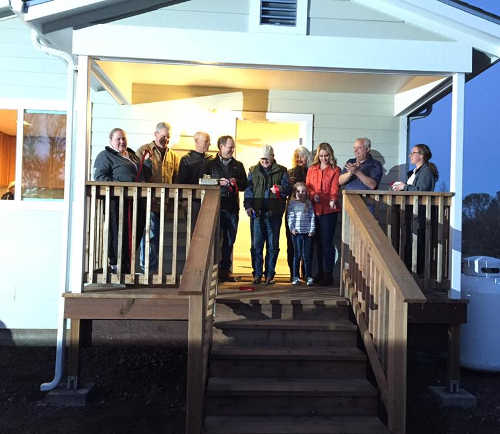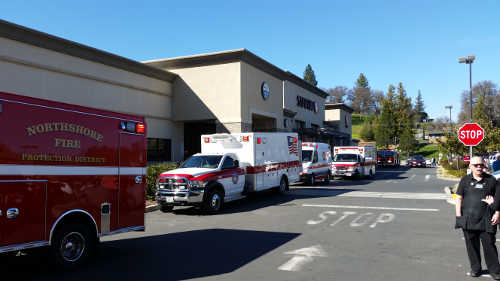- Lake County News reports
Organizations dedicate home completed for Valley fire survivor

MIDDLETOWN, Calif. – A well-loved Middletown fire survivor recently was honored at a home dedication ceremony after losing everything more than one year ago in the Valley fire.
Together Hope City, North Coast Opportunities and AmeriCorps National Civilian Community Corps celebrated their partnership and presented the new home to fire survivor Orville Young on Feb. 28.
The Valley fire began on Sept. 12, 2015, and was not fully contained until Oct. 6. Altogether, the fire burned 76,076 acres and nearly 2,000 structures, and claimed four lives, making it the third most destructive fire in California history.
Young, who was born and raised in Middletown, lost a home that was not only historically significant – it was reported to be one of the first settled homes of the town in 1890 – but rich in sentimental feelings and nostalgic connections.
In the fire’s aftermath many organizations and municipalities came to the aid of recovery to rebuild fire survivors’ lives.
North Coast Opportunities, a nonprofit community action agency, played a vital role in emergency and long-term fire relief, as they organized strategic networking with other agencies to provide proper recovery efforts to the community.
One such organization called Hope City, an Indiana nonprofit helping underinsured individuals recover from country-wide natural and manmade disasters, reached out to help assist in rebuilding homes for those underinsured before the fire.
In effort to help rebuild Lake County, NCO partnered with Hope City and wrote a grant for a year of volunteer labor from the AmeriCorps NCCC organization.
As a result, the grant was accepted and four Pacific Region AmeriCorps NCCC teams consisting each of about 12 individuals 18 to 24 year olds, will be hosted this year from Sacramento to rebuild 15 to 20 homes in the area.
Two teams of AmeriCorps NCCC Pacific Region contributed to the process of rebuilding Young’s home from the ground up.
At the home dedication ceremony NCO, Hope City and the AmeriCorps NCCC team "Green Four" commemorated the tasks completed over several months to rebuild this home, including foundation prepping, electrical, dry walling, painting, roofing and flooring.

 How to resolve AdBlock issue?
How to resolve AdBlock issue? 















